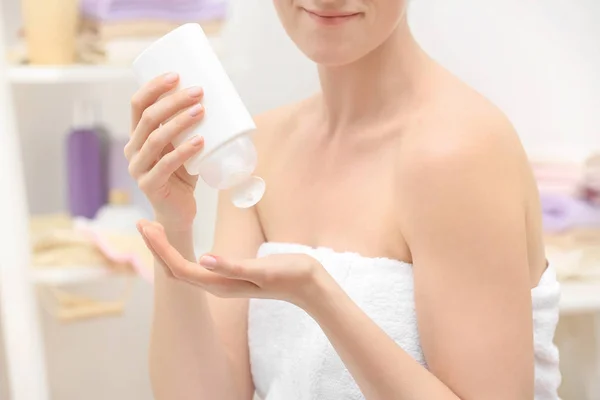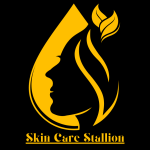Cerave Foaming Facial Cleanser Ingredients include aqua/water, cocamidopropyl hydroxysultaine, glycerin, sodium lauroyl sarcosinate, niacinamide, gluconolactone, sodium methylcocoyl taurate, peg-150 pentaerythrityl tetrastearate, ceramide np, ceramide ap,
Ceramide eop, carbomer, calcium gluconate, sodium chloride, salicylic acid, sodium benzoate, sodium lauroyl lactylate, cholecalciferol, cholesterol, phenoxyethanol, disodium edta, tetrasodium edta, hydrolyzed hyaluronic acid, phytosphingosine, xanthan gum, ethylhexylglycerin.
Dive into the heart of skincare science with CeraVe Foaming Facial Cleanser, a harmonious blend of dermatologically-approved ingredients designed to rejuvenate and purify your skin. This meticulously crafted cleanser combines the magic of ceramides, hyaluronic acid, and niacinamide, offering a trifecta of moisture retention, soothing hydration, and skin barrier fortification.
Engineered for efficacy, it turns the simple act of washing your face into a revitalizing ritual, ensuring that with every foam, your skin is gently cleansed, deeply hydrated, and visibly enhanced. Whether you’re battling oily skin or seeking a refreshing cleanse, the CeraVe Foaming Facial Cleanser stands as a beacon of innovation in skincare, inviting you to unveil a brighter, healthier complexion.

Cerave Foaming Facial Cleanser Ingredients
CeraVe Foaming Facial Cleanser is a highly sought-after skincare product, renowned for its unique formula designed to cleanse and refresh the skin without stripping it of its natural moisture.
This gentle yet effective cleanser is packed with essential ingredients like ceramides, hyaluronic acid, and niacinamide, which work together to maintain the skin’s barrier, hydrate, and soothe. Ideal for normal to oily skin types, its popularity is underscored by its ability to provide a deep clean while still nurturing skin health.
Key Ingredients and Their Benefits
At the heart of CeraVe Foaming Facial Cleanser’s success are its key components. Ceramides are lipids that help form the skin’s barrier and help skin retain moisture. The inclusion of hyaluronic acid, a powerful hydrating agent, ensures that the skin is kept moist and plump, reducing the appearance of fine lines.
Niacinamide, also known as Vitamin B3, is celebrated for its anti-inflammatory properties, helping to calm the skin and reduce redness. These ingredients are complemented by a gentle foaming action that effectively removes dirt, oil, and makeup without compromising the skin’s natural protective barrier.
User Experience and Compatibility
People love CeraVe Foaming Facial Cleanser for its lightweight texture and how it leaves the skin feeling clean, refreshed, and not overly dry or tight a common concern with facial cleansers aimed at oily skin types.
It’s often described with phrases like “gentle yet effective” and “leaves skin feeling soft”. This product is designed to be compatible with a wide range of skin types, particularly those with normal to oily skin, making it a versatile addition to any skincare routine.
Skincare Routine Integration
Integrating CeraVe Foaming Facial Cleanser into a daily skincare routine is straightforward. Users typically apply the product morning and night, massaging it onto wet skin before rinsing thoroughly. Its formula is non-comedogenic, meaning it won’t clog pores, which is a vital feature for those concerned about acne.
The cleanser’s ability to remove excess oil without stripping the skin makes it an excellent first step in both AM and PM skincare routines, preparing the skin for subsequent products like toners, serums, and moisturizers.

Base Formulation
Base formulation is a pivotal aspect of skincare products, particularly in the realm of cleansers. The base of a cleanser refers to its fundamental composition, including the primary ingredients that determine its texture, pH level, and how it interacts with the skin.
Common terms associated with base formulations include “hydrating,” “foaming,” “cream-based,” “gel-based,” and “pH-balanced,” all of which are critical for consumers seeking products that align with their skincare goals.
The role of the base in skincare extends beyond mere cleansing; it is instrumental in maintaining the skin’s natural barrier, ensuring hydration, and preventing irritation. A well formulated base can support the skin’s health by providing essential nutrients, aiding in moisture retention, and protecting against environmental stressors.
For instance, a hydrating base might be described as “nourishing” or “moisture-rich,” appealing to individuals with dry or sensitive skin, while a “lightweight” and “non-comedogenic” base may attract those with oily or acne-prone skin.
Understanding how the base impacts different skin types is crucial for selecting the right skincare products. For example, oily skin types might benefit from gel-based cleansers with astringent properties, often labeled as “oil-control” or “pore-minimizing.”
Conversely, dry skin types may prefer cream-based cleansers that are “ultra-moisturizing” and “gentle,” helping to alleviate dryness without stripping the skin of its natural oils. Sensitive skin requires a base that is “fragrance-free” and “hypoallergenic” to minimize the risk of irritation.
Key Ingredients Analysis
Navigating the labyrinth of skincare ingredients can be daunting, yet understanding the key components can transform your skin health. Here’s a deep dive into four cornerstone ingredients: Ceramides, Hyaluronic Acid, Niacinamide, and Glycerin, each pivotal in maintaining and enhancing skin vitality.
Ceramides: The Skin’s Fortifying Bricks
Ceramides, lipid molecules found in the skin, act as the cement in the skin barrier, preventing moisture loss and shielding against environmental aggressors. Their pivotal role in strengthening the skin’s natural barrier translates into enhanced resilience and hydration.
For varying skin types, ceramides offer universal benefits, fortifying the skin’s defense across the board, making them essential for maintaining a healthy and robust complexion.
Hyaluronic Acid: Nature’s Moisture Magnet
Renowned for its moisture-binding properties, Hyaluronic Acid can hold up to 1000 times its weight in water, making it a hydration powerhouse. This capacity not only ensures skin is plump and hydrated but also enhances tissue repair and barrier function.
Its ability to draw moisture from the environment makes it crucial for all skin types, particularly in dry conditions. However, its concentration and molecular size should be considered to maximize benefits without overwhelming the skin.
Niacinamide: The Multitasking Maven
Niacinamide, a form of Vitamin B3, is celebrated for its versatile skin benefits, including improving skin texture, reducing inflammation, and controlling oil production. Its anti-inflammatory properties are particularly beneficial for acne-prone and sensitive skin, offering a gentle yet effective solution to combat breakouts and redness, proving its worth as a staple in skincare routines for its broad-reaching benefits.
Glycerin: The Hydration Hero
Glycerin, a humectant, draws moisture into the skin, providing essential hydration and relief for dry and dehydrated skin. Its ability to attract water from the air and the underlying layers of skin ensures that the surface remains hydrated and soft.
When combined with other skincare ingredients, glycerin works synergistically to enhance their hydrating effects, showcasing its role as a foundational ingredient in moisturizing formulas.
Harnessing the power of these key ingredients can lead to a dramatic improvement in skin health and appearance. By understanding their unique benefits and how they interact with various skin types, individuals can tailor their skincare routines for optimal results.
Surfactants and Cleansing Agents
Surfactants and cleansing agents play a pivotal role in the formulation of personal care products, particularly in shampoos, body washes, and facial cleansers. Among these, Cocamidopropyl Hydroxysultaine and its related compounds stand out for their multifaceted benefits in skincare and haircare formulations.
Cocamidopropyl Hydroxysultaine and related compounds
Cleansing Efficacy
Cocamidopropyl Hydroxysultaine is renowned for its superior cleansing ability, effectively removing dirt, oil, and impurities from the skin and hair. This surfactant is a common choice in “gentle cleansing” and “deep clean” product formulations, offering an effective yet non-stripping cleansing action that preserves the skin’s natural barrier.
Mildness to the Skin
Unlike harsher surfactants, Cocamidopropyl Hydroxysultaine is celebrated for its mildness, making it a staple in “sensitive skin care” and “hypoallergenic” products. It reduces the risk of skin irritation and dryness, often described as “gentle” or “soft on the skin,” thereby maintaining the skin’s moisture balance and comfort.
Role in Foaming Action
This compound also enhances the “foaming and lathering” properties of cleansers, contributing to a luxurious user experience. It is linked with “rich lather” and “creamy foam,” attributes that are not only aesthetically pleasing but also help evenly distribute the product across the skin or hair for thorough cleansing.
Comparison with other cleansing agents
Sulfates vs. Sulfate-free Formulas
Cocamidopropyl Hydroxysultaine often features in “sulfate-free” products, drawing a contrast with traditional sulfate-based cleansers known for their “harsh” and “stripping” effects. Sulfate-free formulas, leveraging compounds like Cocamidopropyl Hydroxysultaine, are marketed as “gentler” and “safer for sensitive skin,” addressing consumer concerns over skin irritation and dryness.
Impact on Skin’s Natural Oils
The shift towards sulfate free cleansers reflects a growing awareness of the importance of preserving the skin’s natural oils. Cocamidopropyl Hydroxysultaine is adept at cleansing without over-drying, thus maintaining the “skin’s natural moisture” and “protective barrier,” in contrast to sulfates that can disrupt the skin’s lipid layer, leading to “dryness” and “irritation.”
In crafting formulations that are both effective and gentle, Cocamidopropyl Hydroxysultaine and its analogs emerge as key ingredients, balancing deep cleansing with skin and hair care benefits. This surfactant’s ability to cleanse, condition, and comfort makes it a cornerstone in the development of modern, skin-friendly personal care products.
Preservatives and Stabilizers
Preservatives and stabilizers such as parabens, phenoxyethanol, and their alternatives play a critical role in ensuring the safety, efficacy, and longevity of skincare formulations. Amidst ongoing debates over safety and potential health impacts, these ingredients have been scrutinized and, consequently, have also seen the rise of alternative preservatives aimed at providing safer options without compromising product stability.
Parabens, known for their broad-spectrum antimicrobial properties, have been a staple in preserving cosmetics, yet concerns over their estrogenic activity have led to increased consumer awareness and demand for paraben-free products. Phenoxyethanol emerges as a popular alternative, prized for its efficacy and lower sensitization risk, though it too is not without its detractors.
The function of preservatives and stabilizers extends beyond mere shelf life extension; they are indispensable in maintaining the integrity of a product’s formula, preventing microbial contamination, and ensuring the safety of the product upon application.
This aspect is crucial in skincare, where product purity directly impacts skin health. The evolution of skincare formulations has thus seen a push towards innovative preservatives that align with consumer demands for safety, natural ingredients, and clean beauty standards.
When discussing the importance of these ingredients in skincare formulations, common phrases such as “shelf-life,” “microbial growth prevention,” “skin health,” and “clean beauty” often surface, highlighting the multifaceted role preservatives and stabilizers play.
As the industry and consumers alike navigate the balance between safety, efficacy, and environmental impact, the dialogue around these ingredients continues to evolve, shaping the future of skincare products.
Additional Ingredients
In the realm of skincare and beauty products, the components that often fly under the radar fragrances and dyes, along with water and pH adjusters play pivotal roles that extend beyond mere aesthetic appeal. Fragrances and dyes, while enhancing the sensory experience, carry a potential for irritation, making them a critical consideration for individuals with sensitive skin.
The allure of a pleasantly scented lotion or the vibrant hue of a facial cream can be compelling, but for those prone to reactions, “hypoallergenic,” “fragrance-free,” and “dye-free” are essential labels to look for, underscoring the need for vigilance in ingredient selection to mitigate adverse effects.
Conversely, water and pH adjusters are unsung heroes in maintaining the stability and effectiveness of beauty products. They not only serve as the backbone for many formulations, ensuring that active ingredients are dispersed evenly, but also play a crucial role in preserving the skin’s natural pH balance.
This balance is fundamental to skin health, acting as a barrier against bacteria and environmental stressors. Products labeled with “pH-balanced” are indicative of their designed harmony with the skin’s natural state, promoting optimal absorption and minimizing the risk of irritation.
Understanding these components’ dual roles in enhancing the user experience while ensuring safety and efficacy can guide consumers toward making informed choices. Looking for products tailored to sensitive skin, or those that balance pH levels, becomes a proactive step in nurturing one’s skin health.
Benefits for Skin Types
Navigating the complex landscape of skincare, individuals across the spectrum from normal to oily, sensitive, and dry skin types can each find tailored benefits to address their unique concerns. For those with normal to oily skin, achieving a harmonious balance in oil production is crucial, not only to maintain a matte finish but also to ward off the unwelcome sheen that can lead to acne breakouts.
This balance is often sought through products that purify and refine pores while ensuring the skin’s natural defenses remain intact against environmental aggressors.
Sensitive skin types, on the other hand, require a gentle approach to minimize irritation and redness, a common plight that can exacerbate skin sensitivity. Strengthening the skin barrier becomes paramount, leveraging soothing ingredients that fortify against external irritants and lock in essential moisture, thus promoting a resilient and calm complexion.
For those battling dry skin, the quest for deep hydration and moisture retention is never-ending. The goal is to quench the skin’s thirst without stripping away its precious natural oils, which are vital for maintaining a healthy, supple texture. Emollient-rich creams and serums are often the heroes, delivering intensive hydration that penetrates deeply to alleviate tightness and flakiness.
In essence, whether it’s balancing oil production, fortifying sensitive skin, or lavishing dry skin with moisture, the right skincare regimen can transform and tailor to individual needs, promoting a healthy, radiant complexion that feels as good as it looks.
“Optimize your skincare routine with targeted solutions for every skin type, from oil control and acne prevention to soothing sensitivity and boosting hydration, for a flawless, healthy glow.”
Considerations and Potential Concerns
When discussing skincare, it’s essential to address key considerations and potential concerns that consumers often face. These include allergic reactions and sensitivities, the interaction with other skincare products, and environmental and ethical considerations.
Allergic Reactions and Sensitivities
Individuals often express concerns about potential allergic reactions or sensitivities to skincare ingredients. Common terms associated with this topic include “hypoallergenic,” “dermatologist-tested,” “fragrance-free,” and “sensitive skin formulas.” Consumers are advised to look for products that are specifically designed to minimize the risk of allergic reactions and are suitable for sensitive skin types.
Interaction with Other Skincare Products
Another important consideration is how a product interacts with other items in a skincare routine. Terms like “non-comedogenic,” “pH-balanced,” and “layering skincare” come up frequently. It’s crucial to understand the compatibility of products to avoid adverse reactions and ensure that active ingredients work harmoniously for optimal results.
Environmental and Ethical Considerations
Lastly, the impact of skincare products on the environment and ethical concerns are increasingly significant to consumers. Keywords in this area include “cruelty-free,” “vegan,” “sustainable packaging,” and “ethical sourcing.” Shoppers are leaning towards brands that not only care for their skin but also prioritize the planet and ethical practices in their production and sourcing methods.
Incorporating these considerations into your skincare routine ensures not only the health of your skin but also supports ethical and environmental stewardship.

FAQs
What are the primary active ingredients in CeraVe Foaming Facial Cleanser?
The CeraVe Foaming Facial Cleanser is formulated with several key active ingredients, including ceramides (1, 3, and 6-II), niacinamide, and hyaluronic acid. Ceramides help restore and maintain the skin’s natural barrier, niacinamide helps calm the skin, and hyaluronic acid attracts hydration to the skin’s surface.
Is CeraVe Foaming Facial Cleanser suitable for sensitive skin?
Yes, this cleanser is designed to be gentle on the skin, making it suitable for people with sensitive skin. Its formula is non-irritating and maintains the skin’s natural barrier with essential ceramides, without using harsh surfactants or fragrances that can irritate sensitive skin.
Does CeraVe Foaming Facial Cleanser contain any fragrances?
No, CeraVe Foaming Facial Cleanser is fragrance-free, making it a good choice for individuals who are sensitive to fragrances in their skincare products.
Can CeraVe Foaming Facial Cleanser be used on acne-prone skin?
Yes, it is designed for normal to oily skin and is non-comedogenic, meaning it won’t clog pores. This makes it an excellent option for those with acne-prone skin. Its formulation helps remove excess oil, dirt, and makeup without disrupting the skin’s natural protective barrier.
How does CeraVe Foaming Facial Cleanser maintain the skin’s moisture barrier?
The cleanser contains three essential ceramides (1, 3, and 6-II) that help restore and maintain the skin’s natural barrier. By doing so, it helps the skin retain moisture and keep irritants out, ensuring that the cleansing process does not strip the skin of its natural oils.
Is the product tested on animals?
CeraVe is a brand that values ethical considerations, including animal welfare. For the most current information on their testing practices, it’s recommended to consult the official CeraVe website or contact their customer service for the latest policies on animal testing.
How often should I use CeraVe Foaming Facial Cleanser?
The cleanser is gentle enough for daily use, both morning and night. However, individual skin types vary, so it’s essential to listen to your skin’s needs and adjust the frequency accordingly.
Are there any ingredients in CeraVe Foaming Facial Cleanser that could cause allergic reactions?
While the cleanser is formulated to be gentle and is generally well-tolerated, individuals with specific allergies should review the ingredient list. Ingredients like niacinamide, although beneficial for most, could cause reactions in those with sensitivities to it. Always patch test a new product before full application if you have known allergies.
Is this cleanser pH-balanced?
Yes, CeraVe Foaming Facial Cleanser is formulated with a pH level that is conducive to maintaining the skin’s natural barrier and microbiome, making it a balanced choice for facial care.
Can CeraVe Foaming Facial Cleanser remove makeup?
Yes, it effectively removes dirt, oil, and even non-waterproof makeup without stripping the skin of its natural moisture, making it a versatile part of any skincare routine.
conclusion
The CeraVe Foaming Facial Cleanser stands out in the skincare market due to its meticulously selected ingredients, which cater to the needs of normal to oily skin types. Its formula incorporates essential ceramides (1, 3, 6-II) that help restore and maintain the skin’s natural barrier, hyaluronic acid to hydrate the skin by retaining moisture, and niacinamide to soothe the skin.
These ingredients work synergistically to cleanse and refresh the skin without stripping it of its natural oils, thus maintaining its delicate balance. This makes the CeraVe Foaming Facial Cleanser a highly effective and gentle option for individuals seeking to purify their complexion while ensuring it remains hydrated, calm, and healthy.

